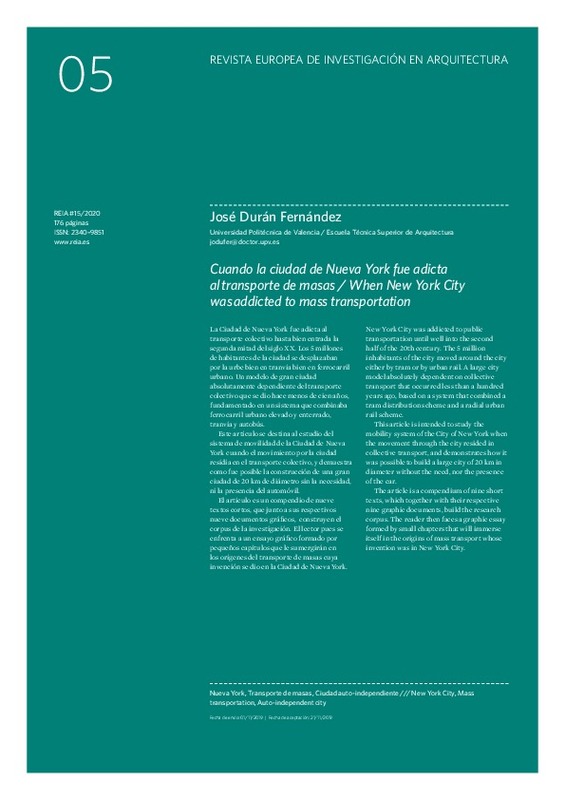JavaScript is disabled for your browser. Some features of this site may not work without it.
Buscar en RiuNet
Listar
Mi cuenta
Estadísticas
Ayuda RiuNet
Admin. UPV
Cuando la ciudad de Nueva York fue adicta al transporte de masas
Mostrar el registro completo del ítem
Durán Fernández, J. (2020). Cuando la ciudad de Nueva York fue adicta al transporte de masas. REIA. Revista europea de investigación en arquitectura. (15):71-87. http://hdl.handle.net/10251/163822
Por favor, use este identificador para citar o enlazar este ítem: http://hdl.handle.net/10251/163822
Ficheros en el ítem
Metadatos del ítem
| Título: | Cuando la ciudad de Nueva York fue adicta al transporte de masas | |
| Otro titulo: |
|
|
| Autor: | ||
| Entidad UPV: |
|
|
| Fecha difusión: |
|
|
| Resumen: |
[ES] La Ciudad de Nueva York fue adicta al
transporte colectivo hasta bien entrada la
segunda mitad del siglo XX. Los 5 millones
de habitantes de la ciudad se desplazaban
por la urbe bien en tranvía bien en ferrocarril
urbano. ...[+]
[EN] New York City was addicted to public
transportation until well into the second
half of the 20th century. The 5 million
inhabitants of the city moved around the city
either by tram or by urban rail. A large city
model ...[+]
|
|
| Palabras clave: |
|
|
| Derechos de uso: | Reserva de todos los derechos | |
| Fuente: |
|
|
| Editorial: |
|
|
| Versión del editor: | http://www.reia.es/ | |
| Tipo: |
|







